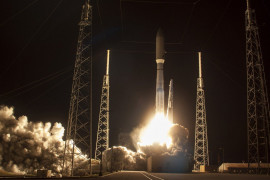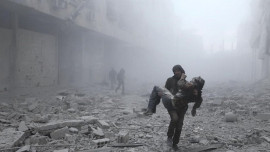
Inspectors from the Organisation for the Prohibition of Chemical Weapons (OPCW) are due to start work in Douma, outside the Syrian capital on Saturday. In addition to collecting samples, they will be looking for other clues to help determine whether banned toxins were used in an attack on April 7. The OPCW Fact-Finding Mission will not assign blame.
Here is an overview of their objectives and challenges:
Samples
- A top priority will be collecting samples, both environmental (such as soil) and biomedical (eg. blood) from victims and the scene of the attack. The samples will be returned to the OPCW’s main laboratory in the Netherlands. The samples are generally split, up to four times in some cases, and sent to independent national laboratories affiliated with the OPCW. The inspectors are bound to a strict chain of custody procedure, which means they usually must be present when a sample is taken and it must remain in their possession. In the past, the OPCW has worked with medical staff from the World Health Organisation, who have provided samples from victims and witnesses. These could be blood, urine or tissue samples.
Divided UN falters in response to alleged Syria chemical attack
Evidence
- By the time environmental samples are taken in Douma it will have been a week since the alleged attack. This makes it more difficult to collect evidence than a normal crime scene, where authorities often arrive within hours. The OPCW team will work as quickly as possible to collect any samples of chlorine and sarin - which it previously found to have been used in the civil war - or other poisonous chemicals.
Chlorine dissipates extremely rapidly and in some cases is no longer traceable after a day. Other chemical compounds, such as sarin, might be found days or even weeks later.
The inspectors will also be looking for other evidence, such as canisters, rocket or bomb fragments, impact sites and craters and will take photographs and video of them. The delivery mechanisms often contain traces of chemicals.
Witnesses
- Witnesses have spoken of hearing the whistle of barrel bombs falling from the sky. These too have been widely used in the Syrian war, as previously documented by the OPCW’s Fact-Finding Mission. Some carried canisters of chlorine and an explosive charge. These too, if found, could be proof of a chemical attack.
The team will interview emergency responders, survivors, medical staff who treated victims and other witnesses to determine whether they suffered from symptoms associated with chemicals. These might include suffocating, foaming at the mouth, constricted pupils, convulsions and involuntary urination or defecation.
No decision yet from Trump on Syria response
Safety risk
- Fighting between government forces and rebels in Douma, a town in the Ghouta region east of Damascus, has ceased, but security risks remain. Inspectors have twice come under fire while trying to get to the site of chemical weapons sites in Syria.
In August 2013, they were shot at by a sniper near eastern Ghouta, where hundreds of people had been gassed with the nerve agent sarin.
In May 2014, a convoy of vehicles carrying inspectors was hit by explosives and automatic gunfire while travelling to the northern town of Kafr Zita in Hama governorate. They were briefly held captive. No one was seriously wounded either attack. No culprits were identified.


































































COMMENTS
Comments are moderated and generally will be posted if they are on-topic and not abusive.
For more information, please see our Comments FAQ